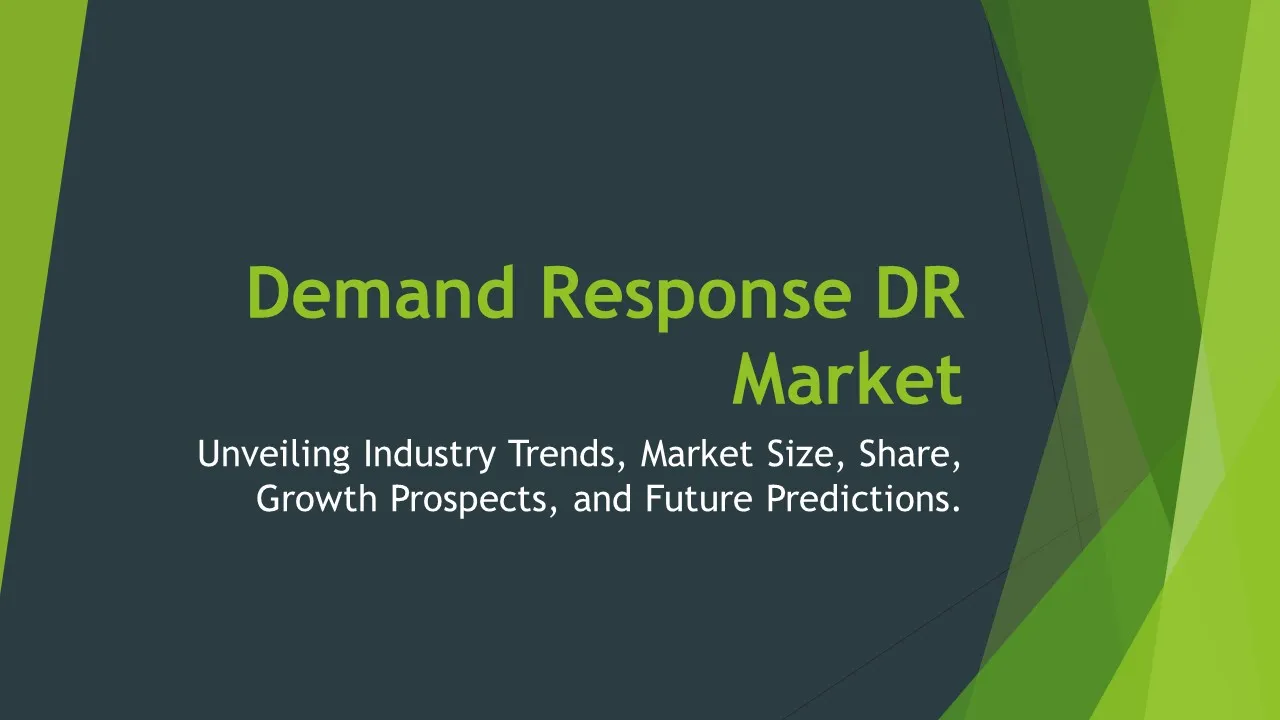Online Ads Exchange Platforms
Online Ads Exchange Platforms Market Segments - by Platform Type (Programmatic Platforms, Ad Networks, Demand-Side Platforms, Supply-Side Platforms, and Ad Exchanges), Ad Format (Display Ads, Video Ads, Native Ads, Search Ads, and Social Media Ads), Pricing Model (CPM, CPC, CPA, CPI, and Hybrid), End-User (Advertisers, Publishers, Ad Agencies, Brands, and Ad Tech Companies), and Region (North America, Europe, Asia Pacific, Latin America, and Middle East & Africa) - Global Industry Analysis, Growth, Share, Size, Trends, and Forecast 2025-2035
- Report Preview
- Table Of Content
- Segments
- Methodology
Online Ads Exchange Platforms Market Outlook
The global online ads exchange platforms market was valued at approximately USD 90 billion in 2023 and is projected to grow at a compound annual growth rate (CAGR) of around 15% during the forecast period from 2025 to 2035. This growth is attributed to the increasing digitalization and the ever-expanding reach of the internet, which have transformed advertising into a more data-driven and targeted approach. The surge in mobile device usage has further propelled the demand for online advertising, as advertisers aim to engage users where they spend most of their time. Furthermore, innovations in programmatic advertising technology are making it easier for businesses to execute complex advertising strategies that reach specific audiences. This shift towards more personalized advertising experiences is expected to create significant opportunities for growth within the online ads exchange platforms market.
Growth Factor of the Market
Several key factors are driving the growth of the online ads exchange platforms market. Firstly, the rise of programmatic advertising, which automates the buying and selling of ads in real-time, has revolutionized the way advertisers and publishers interact. This technology enhances efficiency, reduces costs, and significantly improves targeting capabilities. Secondly, the growing preference among consumers for online content over traditional media has pushed brands to allocate more of their advertising budgets to digital platforms. Additionally, advancements in analytics and big data have enabled advertisers to gather insights into consumer behavior and preferences, allowing for more effective campaigns. The increasing penetration of social media platforms further encourages businesses to engage with audiences through various ad formats. Lastly, the emphasis on return on investment (ROI) has compelled companies to seek measurable outcomes from their advertising efforts, driving them towards online ads exchange platforms that provide detailed performance metrics.
Key Highlights of the Market
- The online ads exchange platforms market is projected to reach USD 250 billion by 2035.
- Programmatic platforms are expected to dominate the market share due to their efficiency and effectiveness.
- The video ads segment is anticipated to witness the highest growth rate among different ad formats.
- North America remains the leading region in terms of market share, driven by high digital ad spending.
- The emergence of artificial intelligence-driven targeting strategies is reshaping how ads are delivered and measured.
By Platform Type
Programmatic Platforms:
Programmatic platforms form the backbone of the online ads exchange market, enabling advertisers to buy and sell ad space through automated processes. These platforms utilize algorithms and data analytics to optimize ad placements in real-time, ensuring that advertising campaigns reach the most relevant audiences. As automation reduces the need for manual intervention, marketers can allocate their resources more effectively, focusing on strategy and creative execution rather than transactional tasks. The continual evolution of programmatic technology, including advancements in machine learning and artificial intelligence, is expected to further enhance targeting precision and overall campaign performance, making it a preferred choice for advertisers.
Ad Networks:
Ad networks act as intermediaries between advertisers and publishers, aggregating available ad spaces and selling them to advertisers. They play a crucial role in expanding the reach of advertising campaigns by connecting them with a variety of websites and applications. Ad networks are particularly beneficial for small and medium enterprises that may not have the resources to manage direct relationships with multiple publishers. By providing a one-stop solution for ad placements, they simplify the buying process and often come with bundled services like analytics and performance tracking. This segment is expected to see steady growth as advertisers continue to seek efficient ways to maximize their digital presence.
Demand-Side Platforms:
Demand-side platforms (DSPs) are essential tools that enable advertisers to purchase ad inventory programmatically, allowing for more sophisticated targeting and bidding strategies. By leveraging real-time data, DSPs help advertisers optimize their campaigns based on various parameters, such as audience demographics, location, and browsing behavior. The ability to analyze performance metrics in real-time and adjust strategies on the fly makes DSPs a crucial asset for advertisers looking to enhance campaign effectiveness. As the emphasis on data-driven decision-making continues to grow, the demand for DSPs is expected to rise significantly, propelling growth in this segment.
Supply-Side Platforms:
Supply-side platforms (SSPs) facilitate the selling of ad impressions from publishers to advertisers, ensuring optimal yield management. They empower publishers to manage their ad inventory effectively, maximizing revenue through real-time bidding and programmatic sales. By using SSPs, publishers can access a broader pool of advertisers and optimize their ad placements based on demand and revenue potential. This segment is gaining traction as more publishers recognize the value of programmatic solutions in enhancing their monetization strategies. As the online ad ecosystem continues to evolve, SSPs are poised to play a pivotal role in shaping how publishers approach advertising revenue.
Ad Exchanges:
Ad exchanges serve as digital marketplaces where advertisers and publishers can buy and sell advertising space in real time. They facilitate transparency and efficiency in the transactions, allowing both parties to optimize their ad strategies based on performance and audience engagement. Ad exchanges are crucial for enabling programmatic buying and selling, bringing together multiple ad networks and DSPs to maximize inventory utilization. The growth of ad exchanges is driven by the increasing demand for real-time bidding and the need for advertisers to reach specific audience segments. As the online advertising landscape becomes more competitive, ad exchanges are likely to continue evolving to meet the changing demands of advertisers and publishers alike.
By Ad Format
Display Ads:
Display ads remain one of the most common formats in online advertising, characterized by their visual appeal and ability to convey messages quickly. These ads can appear on various platforms, including websites, apps, and social media, allowing advertisers to reach diverse audiences. The format includes banner ads, rich media, and interactive ads, providing flexibility in how advertisers communicate with their target customers. Display ads are particularly effective for brand awareness campaigns, as they can capture users' attention through compelling visuals and calls to action. As technology advances, the integration of animations, videos, and interactive elements into display advertising is expected to enhance user engagement and drive better results.
Video Ads:
Video ads have gained immense popularity due to their ability to engage viewers more deeply than static formats. These ads can take various forms, including in-stream, out-stream, and social media videos, catering to different viewing preferences. With the growing consumption of video content across platforms such as YouTube, social media, and streaming services, advertisers are increasingly investing in video ads to capture audience attention. The trend towards short-form video content, particularly on social media, has further amplified the demand for this format. As advertisers seek to leverage storytelling and emotional connections in their campaigns, the video ad segment is projected to experience substantial growth.
Native Ads:
Native ads are designed to blend seamlessly with the surrounding content, providing a less intrusive advertising experience for users. This format is often seen in sponsored articles, recommended content, or in-feed ads on social media platforms. The effectiveness of native ads lies in their ability to engage users without disrupting their browsing experience, leading to higher engagement rates and brand affinity. As consumers become more adept at recognizing traditional advertisements, the demand for native advertising is expected to rise. The integration of data-driven targeting and personalization further enhances the attractiveness of native ads, making them a valuable component of any advertising strategy.
Search Ads:
Search ads, often referred to as pay-per-click (PPC) ads, appear on search engine results pages when users enter specific keywords. This format allows advertisers to target potential customers at the moment they express intent, making it a highly effective way to drive traffic and conversions. By optimizing their campaigns based on keyword performance, advertisers can achieve measurable results and refine their strategies over time. The growth of search ads is fueled by the increasing reliance on search engines for information and product discovery. As advertisers become more sophisticated in their keyword strategies and bidding techniques, the search ads segment is anticipated to continue expanding.
Social Media Ads:
Social media ads leverage the vast user bases of platforms like Facebook, Instagram, Twitter, and LinkedIn to reach specific demographics and interests. This format allows advertisers to create highly targeted campaigns based on user behavior, interests, and social connections. The interactive nature of social media enables advertisers to engage users through various ad formats, including carousel ads, stories, and sponsored posts. As social media continues to evolve and integrate new features, the demand for social media advertising is expected to grow significantly. Brands are increasingly prioritizing social media in their marketing strategies, recognizing its potential to build community and foster brand loyalty.
By Pricing Model
CPM (Cost Per Mille):
Cost per mille (CPM) is a pricing model that charges advertisers based on the number of impressions their ads receive, typically calculated per thousand views. This model is particularly beneficial for brand awareness campaigns, as it allows advertisers to reach a larger audience without tying their costs directly to user actions. The CPM model is widely used in display and video advertising, where the focus is on visibility rather than immediate conversions. As advertisers seek to enhance their reach and visibility, the CPM model is expected to remain a popular option in the online ads exchange market.
CPC (Cost Per Click):
Cost per click (CPC) is a performance-based pricing model where advertisers pay only when users click on their ads. This model is ideal for advertisers aiming to drive traffic to their websites or generate leads, as it directly correlates costs with user engagement. CPC advertising is particularly prevalent in search and social media ads, where advertisers can track the effectiveness of their campaigns in real-time. As the emphasis on measurable results continues to grow, the CPC model is expected to gain traction among advertisers looking to maximize their advertising budgets while achieving tangible outcomes.
CPA (Cost Per Action):
Cost per action (CPA) is a pricing model that charges advertisers only when a specified action is completed, such as a purchase or sign-up. This model aligns the interests of both advertisers and publishers, as it incentivizes performance-based advertising. CPA is particularly effective for campaigns focused on conversions, allowing advertisers to optimize their strategies based on user behavior. As more advertisers shift towards goal-oriented campaigns, the CPA model is expected to see increased adoption in the online ads exchange market, providing a clear measurement of return on investment.
CPI (Cost Per Install):
Cost per install (CPI) is a pricing model specific to mobile app advertising, where advertisers pay for each installation of their app generated through their ad campaigns. This model is particularly advantageous for mobile app developers looking to increase their user base and drive downloads. CPI provides a direct correlation between advertising spend and user acquisition, making it a compelling option for app marketers. As mobile app usage continues to surge, the CPI model is expected to remain a crucial component of mobile advertising strategies, driving growth within the online ads exchange platforms market.
Hybrid:
The hybrid pricing model combines various pricing strategies, allowing advertisers to choose the most suitable option for their campaigns. This flexibility enables advertisers to mix CPM, CPC, CPA, and other models based on their specific goals and target audiences. By adopting a hybrid approach, advertisers can optimize their budgets and strategies to maximize the effectiveness of their campaigns. As the online advertising landscape continues to evolve, the demand for hybrid models is likely to increase, enabling advertisers to tailor their approaches to better meet their objectives and achieve optimal results.
By User
Advertisers:
Advertisers constitute a significant segment of the online ads exchange platforms market, encompassing businesses of all sizes aiming to promote their products and services. They leverage advertising platforms to reach specific audiences through targeted campaigns, utilizing various ad formats and pricing models. Advertisers are increasingly investing in data analytics and programmatic buying to enhance their marketing efforts, enabling them to track performance and optimize strategies in real-time. With the growing importance of digital marketing, the number of advertisers participating in online ads exchange platforms is projected to increase, driving market growth.
Publishers:
Publishers play a crucial role in the online ads exchange ecosystem, providing the inventory that advertisers seek to reach their target audiences. They utilize ads exchange platforms to monetize their content by displaying targeted advertisements relevant to their audience. By accessing programmatic advertising solutions, publishers can optimize their inventory management and revenue potential, leading to improved profitability. As the demand for content continues to grow, publishers are expected to increasingly engage with online ads exchange platforms, driving further growth in this segment of the market.
Ad Agencies:
Ad agencies serve as intermediaries between advertisers and online ads exchange platforms, helping businesses develop and execute effective advertising campaigns. These agencies leverage their expertise in analytics, creative execution, and media buying to deliver optimal results for their clients. As the demand for digital advertising increases, ad agencies are incorporating programmatic solutions into their offerings, enabling them to enhance targeting and measurement capabilities. The growing collaboration between ad agencies and online ads exchange platforms is expected to propel market growth as agencies seek to provide more value to their clients through data-driven strategies.
Brands:
Brands are a critical segment within the online ads exchange platforms market, representing companies that invest in advertising to build awareness, engage customers, and drive sales. Many brands have shifted their advertising spend towards digital platforms, recognizing the potential for reaching specific audiences and measuring campaign effectiveness. As brands increasingly prioritize digital engagement, their participation in online ads exchange platforms is anticipated to grow, resulting in heightened competition and innovation within the market. The desire for personalized experiences and direct interaction with consumers is likely to further motivate brands to adopt online advertising strategies.
Ad Tech Companies:
Ad tech companies develop the technology and infrastructure that power online ads exchange platforms, including tools for programmatic buying, data analytics, and performance measurement. As the online advertising landscape becomes more complex, the demand for advanced ad tech solutions is growing, driving innovation and competition among providers. These companies play a pivotal role in facilitating interactions between advertisers and publishers, enabling seamless transactions and enhanced targeting capabilities. The evolution of ad tech is expected to shape the future of online advertising, contributing to the overall growth of the online ads exchange platforms market.
By Region
North America is currently the largest market for online ads exchange platforms, accounting for approximately 40% of the global market share. The region's dominance is driven by a mature digital advertising landscape, high internet penetration, and substantial advertising budgets allocated by businesses. Moreover, advancements in programmatic advertising technology, coupled with the presence of numerous ad tech companies and platforms, enhance North America's competitive edge. The CAGR for this region is projected to be around 14% as businesses increasingly adopt innovative advertising strategies that leverage data analytics and real-time bidding capabilities.
Europe follows closely, holding about 30% of the global market share. The region exhibits a strong growth trajectory, with an increasing shift towards digital advertising over traditional methods. European advertisers are recognizing the importance of targeting and personalization in their campaigns, further fueling the demand for online ads exchange platforms. Additionally, the rise of GDPR regulations has encouraged publishers to adopt programmatic solutions that ensure compliance while maximizing their advertising revenues. The CAGR for the European market is estimated at around 12%, showcasing robust growth potential in the coming years.
Opportunities
The online ads exchange platforms market presents numerous opportunities for growth, particularly in the realm of new technologies and innovative advertising solutions. One of the most significant opportunities lies in the integration of artificial intelligence (AI) and machine learning into advertising platforms. These technologies can enhance targeting capabilities by analyzing vast amounts of data to identify user behaviors and preferences. As advertisers seek more personalized experiences for their audiences, the application of AI in programmatic advertising will likely drive significant demand for advanced ad exchange solutions. Moreover, as automation continues to streamline the ad buying and selling processes, platforms that offer innovative features and user-friendly interfaces will be well-positioned to capture market share.
In addition, the expansion of mobile advertising represents a substantial opportunity for online ads exchange platforms. With the increasing usage of smartphones and tablets, advertisers are keen to reach consumers on their mobile devices through various ad formats such as in-app ads and mobile video ads. This shift towards mobile-first strategies is prompting advertisers to allocate a larger portion of their budgets to mobile advertising, leading to increased demand for relevant ad exchange platforms that cater specifically to mobile users. Furthermore, emerging markets in Asia-Pacific and Latin America offer untapped potential for advertisers and publishers alike, as more businesses look to penetrate these regions and take advantage of the burgeoning digital economy.
Threats
Despite the promising growth prospects, the online ads exchange platforms market faces several threats that could impact its development. One such challenge is the increasing concern regarding data privacy and security. As regulations like the General Data Protection Regulation (GDPR) and the California Consumer Privacy Act (CCPA) come into play, advertisers and publishers must navigate complex compliance requirements while still delivering effective advertising campaigns. Non-compliance can lead to significant penalties and reputational damage, discouraging participation in online ads exchange platforms. Consequently, the evolving regulatory landscape poses a considerable threat to market stability and growth, necessitating ongoing adjustments to advertising strategies.
Another significant threat stems from the rising competition within the online advertising ecosystem. As new entrants and innovative startups emerge in the ad tech space, established players may face challenges in maintaining their market position and customer loyalty. This competition can lead to price wars, forcing companies to lower their prices and potentially compromising the quality of their services. Additionally, the constant evolution of consumer preferences and behavior requires advertising platforms to stay agile and adapt quickly to changing trends. Failure to innovate and provide compelling advertising solutions may result in declining market share and diminished revenue streams for established players.
Competitor Outlook
- Google Ad Manager
- Facebook Audience Network
- Amazon Advertising
- AdRoll
- Rubicon Project
- Index Exchange
- OpenX
- The Trade Desk
- AppNexus
- MediaMath
- Taboola
- AdColony
- InMobi
- Conversant
- Adform
The competitive landscape of the online ads exchange platforms market is characterized by a mix of established players and emerging startups, each vying for market share by offering innovative solutions and enhanced targeting capabilities. Companies such as Google Ad Manager and Facebook Audience Network dominate the market with their extensive reach and advanced technologies, allowing them to provide advertisers with robust tools for campaign management and optimization. Their ability to leverage user data for highly targeted advertising makes these platforms attractive to advertisers looking to maximize their return on investment. Additionally, the integration of programmatic buying and real-time bidding within these platforms enhances their appeal, enabling advertisers to connect with their audiences effectively.
Furthermore, companies like The Trade Desk and MediaMath are making significant strides in the programmatic advertising space, offering sophisticated demand-side platform solutions that cater to the evolving needs of advertisers. Their focus on data-driven decision-making and real-time analytics is helping advertisers optimize their campaigns and achieve better performance metrics. As competition intensifies, these companies are continually refining their technologies and strategies to stay ahead of the curve, ensuring they can provide their clients with the best possible advertising outcomes. The increasing use of artificial intelligence and machine learning in ad targeting and campaign optimization further positions these players for growth in a rapidly changing market.
Emerging players such as AdRoll and Taboola are also gaining traction by offering unique solutions tailored to specific advertising needs. For instance, Taboola specializes in native advertising, providing publishers and advertisers with the tools to create engaging content recommendations that drive traffic and conversions. Similarly, AdRoll focuses on retargeting and cross-channel marketing, helping brands re-engage potential customers who have shown interest in their products. As these companies continue to innovate and expand their offerings, they contribute to the dynamic competitive landscape of the online ads exchange platforms market.
1 Appendix
- 1.1 List of Tables
- 1.2 List of Figures
2 Introduction
- 2.1 Market Definition
- 2.2 Scope of the Report
- 2.3 Study Assumptions
- 2.4 Base Currency & Forecast Periods
3 Market Dynamics
- 3.1 Market Growth Factors
- 3.2 Economic & Global Events
- 3.3 Innovation Trends
- 3.4 Supply Chain Analysis
4 Consumer Behavior
- 4.1 Market Trends
- 4.2 Pricing Analysis
- 4.3 Buyer Insights
5 Key Player Profiles
- 5.1 OpenX
- 5.1.1 Business Overview
- 5.1.2 Products & Services
- 5.1.3 Financials
- 5.1.4 Recent Developments
- 5.1.5 SWOT Analysis
- 5.2 AdRoll
- 5.2.1 Business Overview
- 5.2.2 Products & Services
- 5.2.3 Financials
- 5.2.4 Recent Developments
- 5.2.5 SWOT Analysis
- 5.3 Adform
- 5.3.1 Business Overview
- 5.3.2 Products & Services
- 5.3.3 Financials
- 5.3.4 Recent Developments
- 5.3.5 SWOT Analysis
- 5.4 InMobi
- 5.4.1 Business Overview
- 5.4.2 Products & Services
- 5.4.3 Financials
- 5.4.4 Recent Developments
- 5.4.5 SWOT Analysis
- 5.5 Taboola
- 5.5.1 Business Overview
- 5.5.2 Products & Services
- 5.5.3 Financials
- 5.5.4 Recent Developments
- 5.5.5 SWOT Analysis
- 5.6 AdColony
- 5.6.1 Business Overview
- 5.6.2 Products & Services
- 5.6.3 Financials
- 5.6.4 Recent Developments
- 5.6.5 SWOT Analysis
- 5.7 AppNexus
- 5.7.1 Business Overview
- 5.7.2 Products & Services
- 5.7.3 Financials
- 5.7.4 Recent Developments
- 5.7.5 SWOT Analysis
- 5.8 MediaMath
- 5.8.1 Business Overview
- 5.8.2 Products & Services
- 5.8.3 Financials
- 5.8.4 Recent Developments
- 5.8.5 SWOT Analysis
- 5.9 Conversant
- 5.9.1 Business Overview
- 5.9.2 Products & Services
- 5.9.3 Financials
- 5.9.4 Recent Developments
- 5.9.5 SWOT Analysis
- 5.10 Index Exchange
- 5.10.1 Business Overview
- 5.10.2 Products & Services
- 5.10.3 Financials
- 5.10.4 Recent Developments
- 5.10.5 SWOT Analysis
- 5.11 The Trade Desk
- 5.11.1 Business Overview
- 5.11.2 Products & Services
- 5.11.3 Financials
- 5.11.4 Recent Developments
- 5.11.5 SWOT Analysis
- 5.12 Rubicon Project
- 5.12.1 Business Overview
- 5.12.2 Products & Services
- 5.12.3 Financials
- 5.12.4 Recent Developments
- 5.12.5 SWOT Analysis
- 5.13 Google Ad Manager
- 5.13.1 Business Overview
- 5.13.2 Products & Services
- 5.13.3 Financials
- 5.13.4 Recent Developments
- 5.13.5 SWOT Analysis
- 5.14 Amazon Advertising
- 5.14.1 Business Overview
- 5.14.2 Products & Services
- 5.14.3 Financials
- 5.14.4 Recent Developments
- 5.14.5 SWOT Analysis
- 5.15 Facebook Audience Network
- 5.15.1 Business Overview
- 5.15.2 Products & Services
- 5.15.3 Financials
- 5.15.4 Recent Developments
- 5.15.5 SWOT Analysis
- 5.1 OpenX
6 Market Segmentation
- 6.1 Online Ads Exchange Platforms Market, By User
- 6.1.1 Advertisers
- 6.1.2 Publishers
- 6.1.3 Ad Agencies
- 6.1.4 Brands
- 6.1.5 Ad Tech Companies
- 6.2 Online Ads Exchange Platforms Market, By Ad Format
- 6.2.1 Display Ads
- 6.2.2 Video Ads
- 6.2.3 Native Ads
- 6.2.4 Search Ads
- 6.2.5 Social Media Ads
- 6.3 Online Ads Exchange Platforms Market, By Platform Type
- 6.3.1 Programmatic Platforms
- 6.3.2 Ad Networks
- 6.3.3 Demand-Side Platforms
- 6.3.4 Supply-Side Platforms
- 6.3.5 Ad Exchanges
- 6.1 Online Ads Exchange Platforms Market, By User
7 Competitive Analysis
- 7.1 Key Player Comparison
- 7.2 Market Share Analysis
- 7.3 Investment Trends
- 7.4 SWOT Analysis
8 Research Methodology
- 8.1 Analysis Design
- 8.2 Research Phases
- 8.3 Study Timeline
9 Future Market Outlook
- 9.1 Growth Forecast
- 9.2 Market Evolution
10 Geographical Overview
- 10.1 Europe - Market Analysis
- 10.1.1 By Country
- 10.1.1.1 UK
- 10.1.1.2 France
- 10.1.1.3 Germany
- 10.1.1.4 Spain
- 10.1.1.5 Italy
- 10.1.1 By Country
- 10.2 Asia Pacific - Market Analysis
- 10.2.1 By Country
- 10.2.1.1 India
- 10.2.1.2 China
- 10.2.1.3 Japan
- 10.2.1.4 South Korea
- 10.2.1 By Country
- 10.3 Latin America - Market Analysis
- 10.3.1 By Country
- 10.3.1.1 Brazil
- 10.3.1.2 Argentina
- 10.3.1.3 Mexico
- 10.3.1 By Country
- 10.4 North America - Market Analysis
- 10.4.1 By Country
- 10.4.1.1 USA
- 10.4.1.2 Canada
- 10.4.1 By Country
- 10.5 Middle East & Africa - Market Analysis
- 10.5.1 By Country
- 10.5.1.1 Middle East
- 10.5.1.2 Africa
- 10.5.1 By Country
- 10.6 Online Ads Exchange Platforms Market by Region
- 10.1 Europe - Market Analysis
11 Global Economic Factors
- 11.1 Inflation Impact
- 11.2 Trade Policies
12 Technology & Innovation
- 12.1 Emerging Technologies
- 12.2 AI & Digital Trends
- 12.3 Patent Research
13 Investment & Market Growth
- 13.1 Funding Trends
- 13.2 Future Market Projections
14 Market Overview & Key Insights
- 14.1 Executive Summary
- 14.2 Key Trends
- 14.3 Market Challenges
- 14.4 Regulatory Landscape
Segments Analyzed in the Report
The global Online Ads Exchange Platforms market is categorized based on
By Platform Type
- Programmatic Platforms
- Ad Networks
- Demand-Side Platforms
- Supply-Side Platforms
- Ad Exchanges
By Ad Format
- Display Ads
- Video Ads
- Native Ads
- Search Ads
- Social Media Ads
By User
- Advertisers
- Publishers
- Ad Agencies
- Brands
- Ad Tech Companies
By Region
- North America
- Europe
- Asia Pacific
- Latin America
- Middle East & Africa
Key Players
- Google Ad Manager
- Facebook Audience Network
- Amazon Advertising
- AdRoll
- Rubicon Project
- Index Exchange
- OpenX
- The Trade Desk
- AppNexus
- MediaMath
- Taboola
- AdColony
- InMobi
- Conversant
- Adform
- Publish Date : Jan 21 ,2025
- Report ID : IT-69084
- No. Of Pages : 100
- Format : |
- Ratings : 4.5 (110 Reviews)









